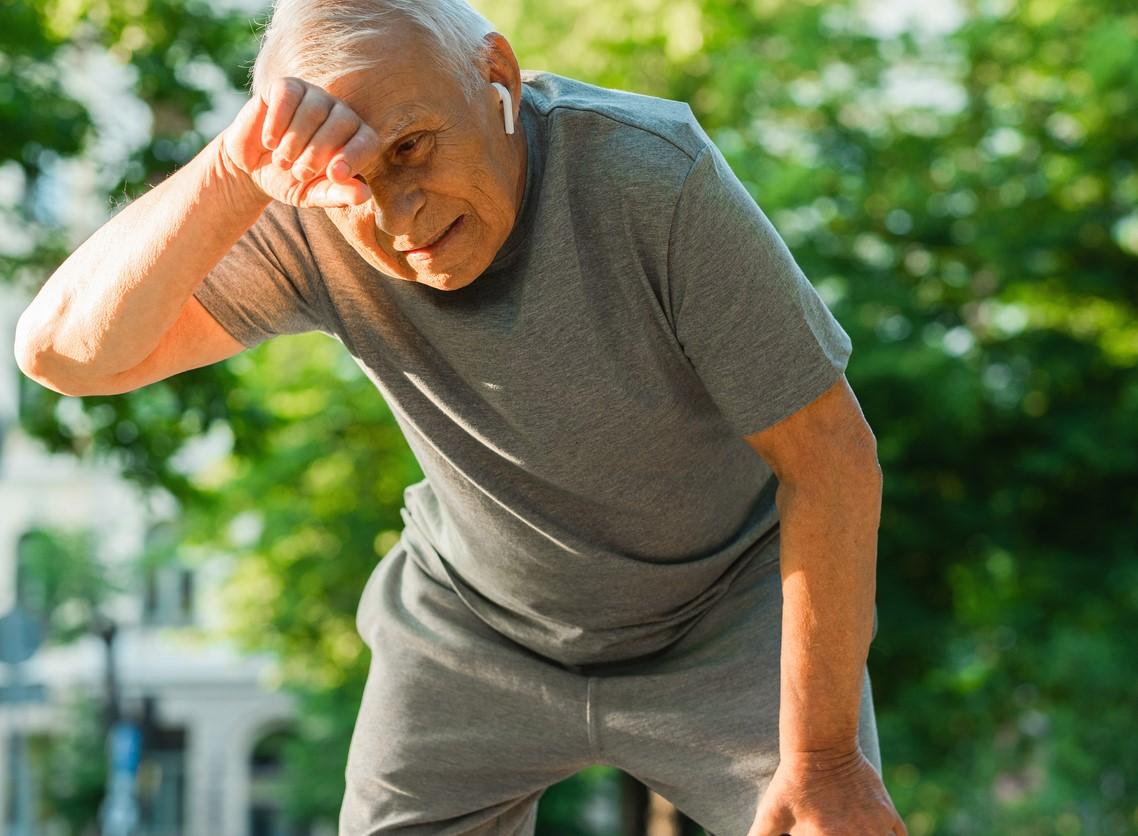Among patients seen at long-COVID clinics in four countries, older people were the most likely to report symptoms and have abnormal chest imaging and lung function tests, finds a study published late last week in the International Journal of Infectious Diseases.
Researchers in Israel, Italy, Spain, and Switzerland followed 2,333 COVID-19 survivors for an average of 5 months to compare symptoms between patients ages 18 to 65 years and those 66 years and older and identify risk factors for persistent fatigue and shortness of breath.
Average patient age was 51 years, 20.5% were 66 years and older, and all were interviewed at one of five hospital-based long-COVID clinics or through phone interviews from May 2020 to March 2021.
Increased abnormal chest imaging, dysfunction
Women made up a greater proportion of the younger group than the older group (51.6% vs 39.5%). Older patients were more likely than their younger counterparts to smoke (41.9% vs 29.5%), be sedentary (49.5% vs 28.2%), and have more underlying illnesses and medication use.
Older patients also had higher rates of severe or critical COVID-19 (58.4% vs 24.4%) and hospital admission (79.1% vs 39.8%) and longer average hospital stays (18 vs 13 days). The only symptom significantly more common in the older group during the acute infection was shortness of breath (64.3% vs 56.6%).
While older participants more often reported cough and joint pain as part of long-COVID symptoms, the younger group reported more sore throats, nasal congestion, headaches, chest pains, heart palpitations, impaired concentration, emotional distress, and loss of smell and taste.
The older group visited the recovery clinic roughly 1 month sooner than younger participants (average days after infection, 123 vs 150) and more often reported a symptom (80% vs 64.2%). But both groups had comparable rates of potentially disabling symptoms (34.1% vs 32.8%), including fatigue and shortness of breath (fatigue, 38.7% vs 39.4%; shortness of breath, 29.9% vs 27.3%).
After acute infection, older patients more often reported increased physical activity (29.2% vs 8.2%), while younger patients tended to report a decline (28.8% vs 16.3%). The older group had higher rates of abnormal chest imaging at their recovery-clinic visit (23.2% vs 10.1%), as well as evidence of lung dysfunction, including impaired forced expiratory volume in 1 second, total lung capacity, and carbon monoxide diffusing capacity.
Link to obesity, female sex
In the older group, risk factors for persistent fatigue included female sex, smoking, obesity, and high blood pressure, with independent associations for obesity (odds ratio [OR], 1.6), female sex (OR, 2.1), and shorter interval between acute infection and recovery-clinic evaluation (OR, 1.6). Older age, however, was not tied to lingering fatigue (OR, 0.8).
Among older participants, female sex, pre-COVID physical activity level, obesity, high blood pressure, and severe COVID-19 were linked to higher rates of persistent shortness of breath, with independent associations for obesity (OR, 1.7), female sex (OR, 1.7), low pre-COVID physical activity level (OR 1.6), chronic pulmonary disease (OR, 2.0), and shorter interval between infection and recovery-clinic evaluation (OR. 2.1).
Higher rates of severe infection and hospitalization likely contributed to the slightly greater persistent symptom burden among older participants, the researchers said. "Higher rates of severe COVID-19 with subsequent deconditioning, diminished baseline muscle mass and pulmonary reserve, as well as comorbidities, are assumed to play a role," they wrote.
The authors called for further prospective, long-term follow-up to better characterize the natural history and recovery patterns of older COVID-19 survivors with lingering symptoms.
"The exceedingly high numbers of COVID-19 recoverees together with the high prevalence of long COVID among the elderly population indicate a need for clinical attention and resource allocation for long COVID among older adults," they concluded. "Possible interventions aimed at promoting rehabilitation and well-being of this susceptible population should be assessed in comparative trials."


















